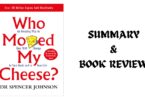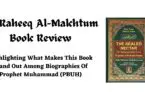Rich Dad Poor Dad is a long (241 pages) financial self-help book, published in 1997 and written by Robert Kiyosaki. The author basically teaches how to attain financial independence and success. In this write-up, we shall go through Rich Dad Poor Dad summary, book review and explanation.
Rich Dad Poor Dad Summary
“Rich Dad Poor Dad” by Robert Kiyosaki is a personal finance book that provides valuable insights on how to achieve financial independence and build wealth.
The book revolves around the author’s two influential figures in his life: his own father, referred to as “Poor Dad,” who was highly educated but struggled financially, and his friend’s father, known as “Rich Dad,” who possessed a different mindset and approach to money.
The author highlights the importance of financial education. He argues that our traditional education system fails to teach us about money management and financial literacy. He emphasizes that acquiring assets that generate income is key to achieving financial freedom, rather than relying solely on a steady paycheck from a job.
The book encourages readers to adopt an entrepreneurial mindset and think outside the box. The author promotes the idea of taking calculated risks and investing in assets such as real estate, stocks, and businesses.
According to the author, building a portfolio of income-generating assets is essential to creating a solid financial foundation.
Kiyosaki emphasizes the difference between assets and liabilities. He defines assets as things that put money in your pocket, such as rental properties or stocks, while liabilities are things that take money out of your pocket, like consumer debt or luxury items.
Moreover, the book encourages readers to focus on acquiring income-generating assets and reducing liabilities to increase their net worth over time.
Another crucial concept discussed in the book is the importance of financial independence. Kiyosaki stresses that being financially independent means that your passive income from investments covers your expenses. It gives you the freedom to choose how you spend your time.
He urges readers to aim for this level of financial independence by creating multiple streams of income and continually growing their wealth.
Additionally, “Rich Dad Poor Dad” highlights the significance of financial discipline and the ability to differentiate between wants and needs.
The author encourages readers to prioritize investing and saving over unnecessary expenses and to develop the habit of paying themselves first by setting aside a portion of their income for investment purposes.
In summary, “Rich Dad Poor Dad” provides readers with valuable insights into the world of personal finance and wealth creation.
By challenging conventional wisdom and offering a different perspective on money, the book encourages individuals to take control of their financial future, acquire financial education, invest in income-generating assets, and strive for financial independence.
Rich Dad Poor Dad Review and Explanation
Rich Dad Poor Dad advocates for financial literacy. The book primarily teaches readers how to build wealth. It explains how a person’s financial success is largely determined by his mindset and the financial education he receives.
Who are Rich Dad & Poor Dad in the book?
Rich Dad Poor Dad is based on the author’s own experiences of growing up with two fathers. One is his biological father, who was highly educated but struggled financially. The second one is his best friend’s father, who was less educated but earned great wealth through real estate investments.
In the book, Kiyosaki refers to these two fathers as his “poor dad” and his “rich dad,” respectively in order to give us financial education.
Use of Anecdotes in the Book
In the book, Kiyosaki frequently uses anecdotes and lessons from his rich dad to contrast with the financial advice he received from his poor dad.
He argues that his poor dad’s approach to money, which stressed the importance of formal education and a steady job, is ultimately limiting and leads to financial insecurity.
In contrast, his rich dad’s approach, which focused on building passive income streams and increasing financial knowledge, allowed him to achieve financial freedom.
Concept of Financial Intelligence in Rich Dad Poor Dad
Kiyosaki introduces the concept of “financial intelligence” in the book. He defines financial intelligence as the ability to understand and manage one’s financial situation.
He argues that financial intelligence is a more important factor in financial success than formal education or job title.
Furthermore, he explains that it is always essential to seek out additional sources of financial education in order to increase one’s financial intelligence.
Key Components of Financial Intelligence explained in Rich Dad Poor Dad
Kiyosaki identifies several key components of financial intelligence in Rich Dad Poor Dad. They include;
- Understanding how money works
- Knowing how to manage money
- Having a financial plan
- Being financially literate
Throughout the book, Kiyosaki encourages readers to increase their financial intelligence in order to take control of their financial lives and build wealth.
Key Principles for Financial Success Explained in the Book
In Rich Dad Poor Dad, Kiyosaki outlines several key principles for building wealth and achieving financial success. Some of them are;
- Having a wealth-building mindset as one’s beliefs and attitudes about money can have a significant impact on their financial success.
- Attaining financial education, as the traditional education system does not adequately prepare people for financial success.
- Building multiple sources of passive income that do not require active effort to maintain. He explains that this is a more reliable way to achieve financial security than relying on a single job or salary.
- Saving and investing a portion of income in order to grow their wealth over time.
Overall, Rich Dad Poor Dad aims to challenge readers’ preconceived notions about money. Moreover, it encourages them to take control of their financial futures by building wealth through investments and entrepreneurship.
You can buy “Rich Dad Poor Dad” from Amazon
Frequently Asked Questions (FAQs)
To be honest, Rich Dad Poor Dad has received mixed reviews. It has also been the subject of criticism from some financial experts.
Some people have found the book to be helpful in understanding the principles of personal finance and wealth-building. On the other hand, others have found the advice to be simplistic or even misleading.
In short, it depends on your personal goals and interests. If you are looking for practical advice on managing your finances and building wealth, there are many other books that may be more suitable.
What are the six lessons in Rich Dad Poor Dad?
The six lessons from “Rich Dad Poor Dad” are:
1) Focus on building wealth through your own business or investments, rather than working for someone else.
2) The wealthy focus on building passive income streams, such as rental properties or dividend-paying stocks, rather than trading their time for money through a job.
3) The most successful people are those who are constantly learning and growing, rather than just working for a paycheck.
4) Building wealth requires patience and long-term thinking, as compound interest can turn small investments into large sums over time.
5) The wealthy often create new sources of income and wealth by identifying opportunities and solving problems, rather than relying on traditional sources of income.
6) Building wealth requires knowledge about financial concepts such as investing, taxes, and risk management.







Leave a Comment